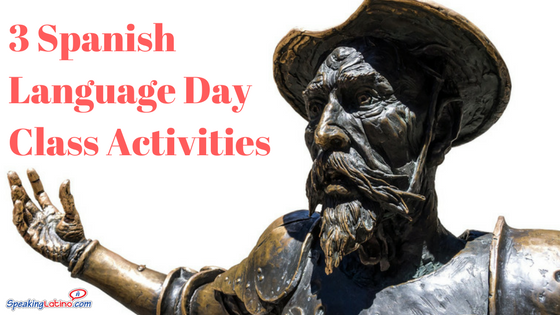
Don’t tilt at windmills, seize the day! Introduce your students to Cervantes and his most famous, most beloved creation, Don Quixote, on Spanish Language Day this April.
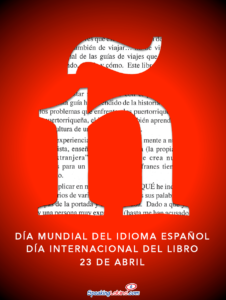
The Significance of Spanish Language Day
Spanish Language Day, also known as Día Mundial del Idioma Español, is a celebration of multilingualism held every year on April 23rd, the anniversary of the death of Miguel de Cervantes Saavedra, the famous Spanish writer and author of The Ingenious Hidalgo Don Quixote of La Mancha. This work of literature from the early 1600s is significant, so Cervantes holds a special place in the Western canon.
Meet Miguel de Cervantes Saavedra
Miguel de Cervantes Saavedra, often known as simply ‘Cervantes,’ is a fascinating figure in Spanish history. He is best remembered as a man of letters, thanks to his literary masterpiece Don Quixote and other works, but he was also a military man.
According to historians, Cervantes sustained injuries to his left hand, rendering it almost completely useless, during the Battle of Lepanto. Despite this trial, Cervantes went back to fight and maintained his military career until he was captured by a Moorish captain, held captive for five years, and survived as a prisoner of war.
Clearly, Cervantes was a complicated man who did not shy away from a struggle, but it is generally believed that Cervantes was not always a happy man, and he lived with a lot of suffering throughout his life. This understanding of Cervantes may shed some light on the character of Don Quixote, Cervantes’s most memorable and charismatic character.
Meet Don Quixote
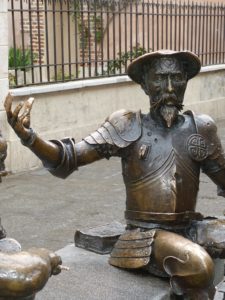 Don Quixote is the name of Cervantes’s famous protagonist and the hero of The Ingenious Hidalgo Don Quixote of La Mancha. He is a wealthy man, with too much free time, so he reads a lot of old-fashioned adventure stories about chivalrous knights and maidens in distress. These stories feed Don Quixote’s already vivid imagination, and the reader soon discovers that Don Quixote, for all of his romantic ideals and good intentions, is completely out of touch with reality.
Don Quixote is the name of Cervantes’s famous protagonist and the hero of The Ingenious Hidalgo Don Quixote of La Mancha. He is a wealthy man, with too much free time, so he reads a lot of old-fashioned adventure stories about chivalrous knights and maidens in distress. These stories feed Don Quixote’s already vivid imagination, and the reader soon discovers that Don Quixote, for all of his romantic ideals and good intentions, is completely out of touch with reality.
Interestingly, even though Don Quixote presents with a lot of behaviors that could be described as mad or unhinged, he is actually very intelligent and unexpectedly organized as he pursues his life of romance and adventure. All of these details make for some hilarious stories, but at the heart of the work, the reader will find compassion and tenderness.
Students may enjoy learning that Don Quixote is the original source of some well-known sayings, like ‘tilting at windmills.’ To tilt is a jousting term, and Don Quixote, in his madness, tilts at, or challenges to a fight, windmills at one point in the story, thinking they are giants and, therefore, his enemies. Nowadays, ‘tilting at windmills’ means an exercise in futility, or an attempt to confront problems that don’t even exist. Even Don Quixote’s name has transformed into a word that describes people who so idealistic and overly romantic, they make totally impractical decisions; ‘quixotic’ is a direct reference to the character of Don Quixote.
So clearly, Spanish Language Day honors Cervantes for good reason. Try out these lesson plans below to give your students the opportunity to learn more about Cervantes and his most endearing hero, Don Quixote.
3 Lesson Plan Ideas for Spanish Language Day
1. An Introduction to the Man of La Mancha for Beginning Spanish Students
Learning objective: Students will learn about the origin of the expression “tilting at windmills.”
How to do this activity: Before doing this activity, review a summary of the story of Don Quixote and request a children’s version of Don Quixote from your school’s library or from a local library.
In class, if you have a projector screen and access to the internet, introduce beginning Spanish students to Don Quixote with this short and accessible YouTube video designed for young children. Reinforce what your students have learned from the video with a brief discussion of the episode; ask students questions like, “what important qualities might someone need in order to be a good knight?” and follow up with questions that connects these qualities to Don Quixote, like “do you observe any of these qualities in Don Quixote?” Emphasize to students that even though Don Quixote might seem a little misguided in this particular adventure, he is trying to be brave and heroic.
Then, if your students are high school-aged or older, explain to students that the expression “tilting at windmills” is an important expression often used today and show them examples like these: an NPR report on the futility of finding affordable concert tickets and a recent business article advising investors to avoid a certain company. Check for understanding by asking students if they have ever ‘tilted at a windmill’ themselves, or observed someone else ‘tilting at windmills.’
 2. Don Quijote in Art: An Interdisciplinary Project for Intermediate Students
2. Don Quijote in Art: An Interdisciplinary Project for Intermediate Students
Learning objective: Students will connect visual representations of Don Quixote to the original literature.
How to do this activity: This activity invites students to read selected quotes from Don Quixote and to make connections between the literature and their observations of corresponding works of visual art. Spanish artists Pablo Picasso and Salvador Dali are perhaps the most famous names linked with images of Don Quixote, so either project images of their work on the wall or board in your classroom while doing this activity or distribute copies of the images on paper to each student.
Give students the quotes from Don Quixote, either selected and organized by you personally, in English and Spanish and discuss the meaning of the quotes in an informal class discussion. Give the students time to puzzle through the complex language.
Then, ask the students to match a quote with one of the visual images and to explain the connection either in writing, if you prefer a written assessment, or to the rest of the class, if you prefer an oral assessment. Encourage any observations at all, as sometimes the most random-seeming thoughts can be the most profound.
 3. Modern Interpretations by Advanced Students: Don Quijote in the Present Day
3. Modern Interpretations by Advanced Students: Don Quijote in the Present Day
Learning objective: Students will learn about the notion of the literary canon and the contemporary role of this novel within the context of the canon.
How to do this activity: Assess prior knowledge by asking students if they have covered the notion of the literary canon in English class. Review or introduce with this definition of ‘canon’ from the American Heritage Dictionary: “an authoritative list, as of the works of an author” and “a basis for judgment; standard; criterion.” Mention to students that the idea of a literary canon is actually a controversial one, and ask the students if they can figure out why it might controversial.
If they get stuck, guide them towards thoughts about the difficulty around deciding who gets to be the authority in charge of deciding what’s good and bad. Encourage a lively discussion around their own opinions of what’s good and bad: favorite foods, movies, and music all have the potential to rouse some emotional conversation amongst adolescents, so allow them to discuss who should be in charge of the criteria that makes a movie or a song or a food item worthy of being in a ‘canon.’
Then, link this idea to literature and to Don Quixote by explaining to students that for a work of literature to be considered a part of the literary canon, it must have beautiful elements. Give students an original passage as well as its English translation from Don Quixote and ask them to read it and identify beauty in the passage, in either English or Spanish.
Allow the students to share their opinions and discuss their findings in class, finishing with a vote to decide whether or not this passage from Don Quixote actually deserves to be a part of the literary canon.
Ready-Made Spanish Class Activities for Spanish Language Day
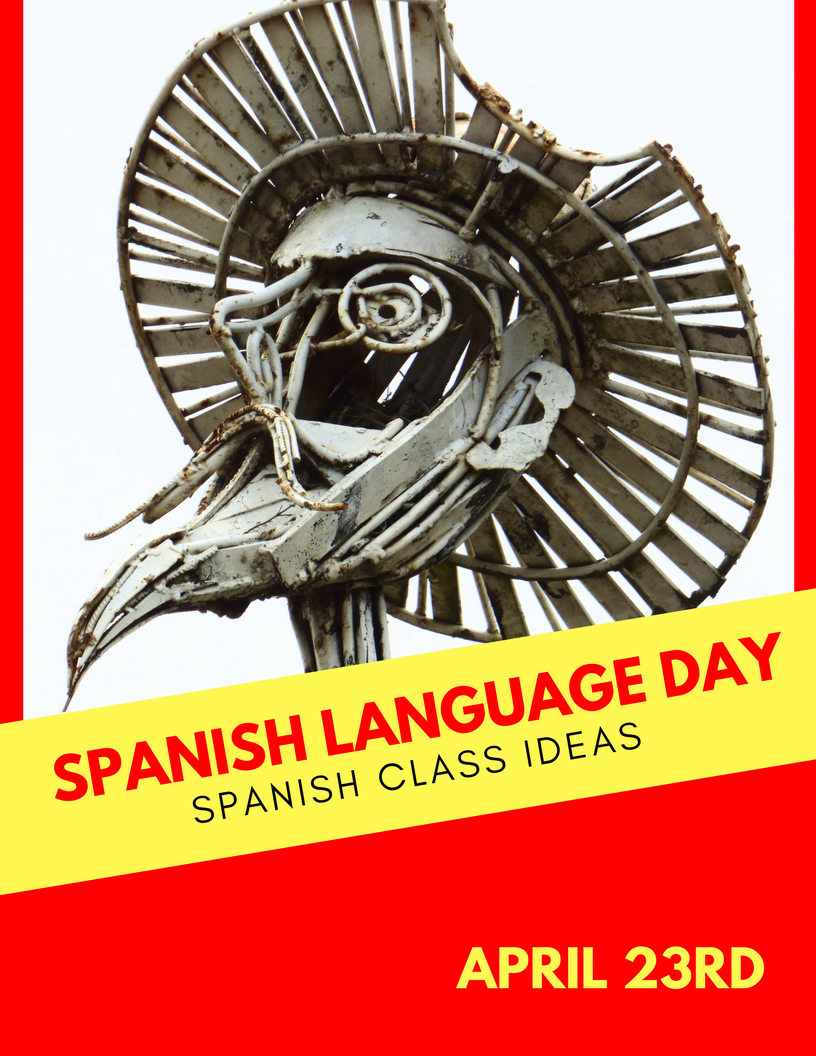 Spanish Language Day activity ideas
Spanish Language Day activity ideas
Includes 3 Spanish Lesson Plan ideas to introduce your students to Cervantes and his most famous, most beloved creation, Don Quixote, on Spanish Language Day this April.
 Spanish Language Changes Lives Lesson Plan
Spanish Language Changes Lives Lesson Plan
This activity aims to increase awareness about the benefits of learning a foreign language, Spanish in this case. In addition, students will reflect upon learning styles, and will try to identify their own. Finally, they will think about activities they can do according to their learning style to help him/her in their Spanish language studies. Students can state how Spanish changed the lives of the people they listened to, describe the lives of different people living in different places, and listen to an interview and understand the basic message being given about the person.
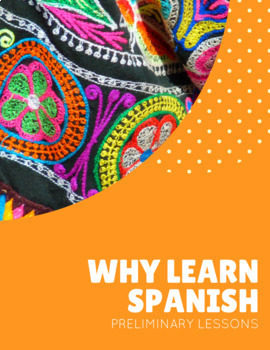 Why Learn Spanish or Any Other Foreign Language Mini-Lesson Plan
Why Learn Spanish or Any Other Foreign Language Mini-Lesson Plan
Discover and reflect upon the benefits of learning Spanish or any other foreign language. Students work in groups with videos and infographics to learn why it is important to learn Spanish or any other foreign language. They will also create a poster with their learning Spanish goals for the year.
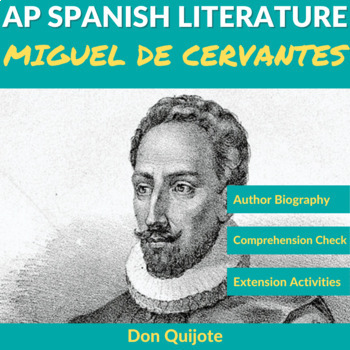 Miguel de Cervantes: AP Spanish Literature Presentation & Activities
Miguel de Cervantes: AP Spanish Literature Presentation & Activities
Introduce your AP Spanish students to Miguel de Cervantes and his work Don Quijote with this ready-made presentation in Google Slides.
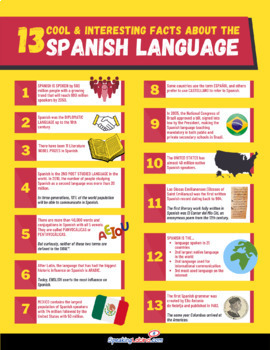 Facts About Spanish Printable Poster
Facts About Spanish Printable Poster
Historic and current facts about the Spanish language such as: Spanish is spoken by 500 million people with a growing trend that will reach 600 million speakers by 2050. Display and discuss this poster during the beginning of the school year or to celebrate Spanish Language Day in April.
 7 Ways to Add Spanish to Your Life Printable Poster
7 Ways to Add Spanish to Your Life Printable Poster
Help your students reflect on how they can infuse their daily life with Spanish. This poster features some quick and easy ideas to immerse into Spanish while doing your regular daily routines.
